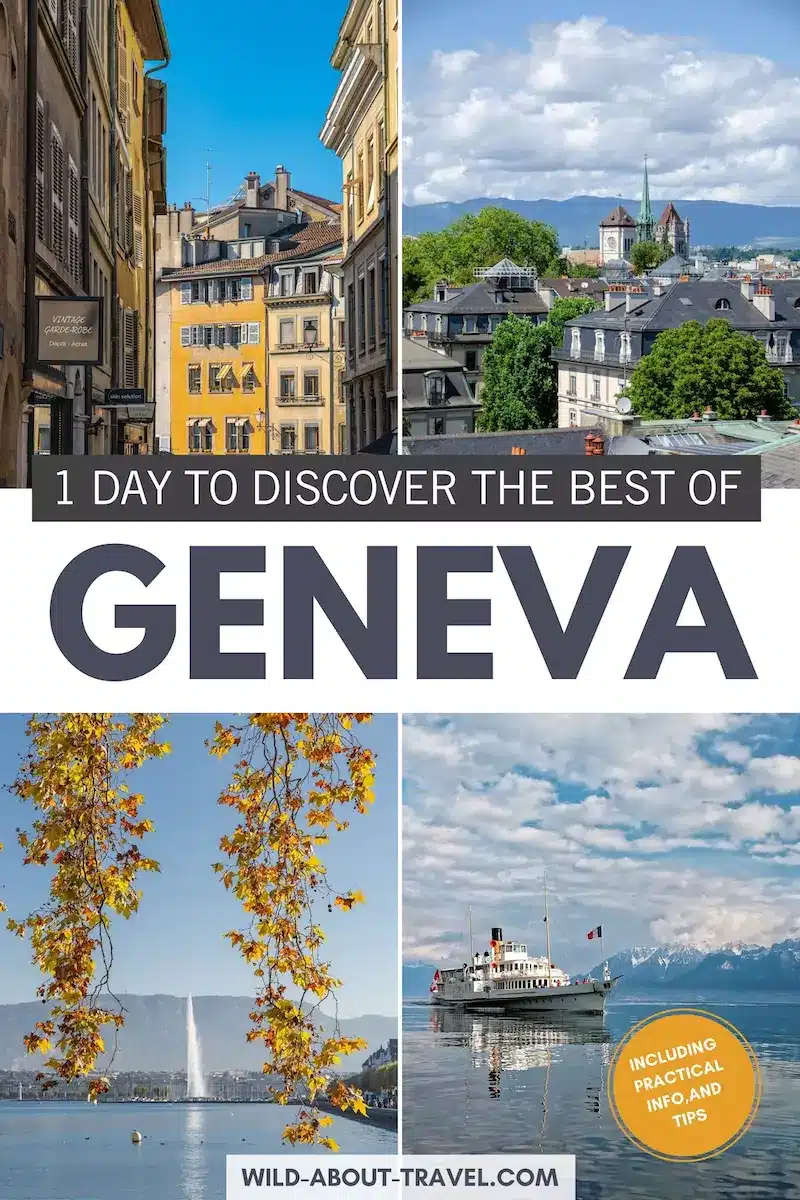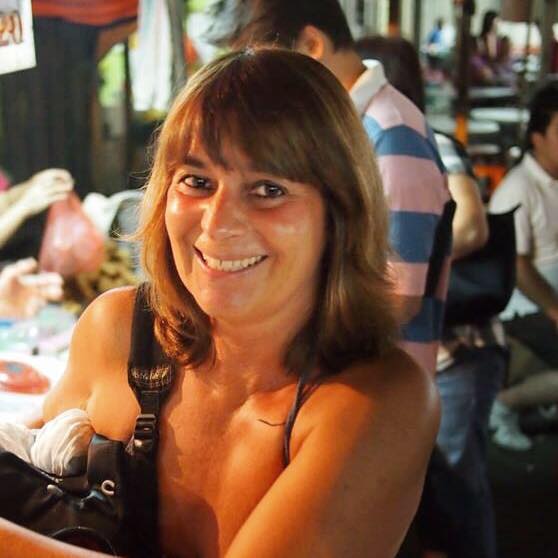Known as the “Peace Capital,” Geneva blends rich history with beautiful settings. Nestled at the western tip of Lake Geneva and surrounded by the Alps and Jura mountains, it’s one of the prettiest cities in Switzerland. Find out how to spend 1 day in Geneva to make the most of your time in this charming city.
This post contains a few affiliate links to selected products and services. If you make a purchase, I receive a small commission at no extra cost to you.
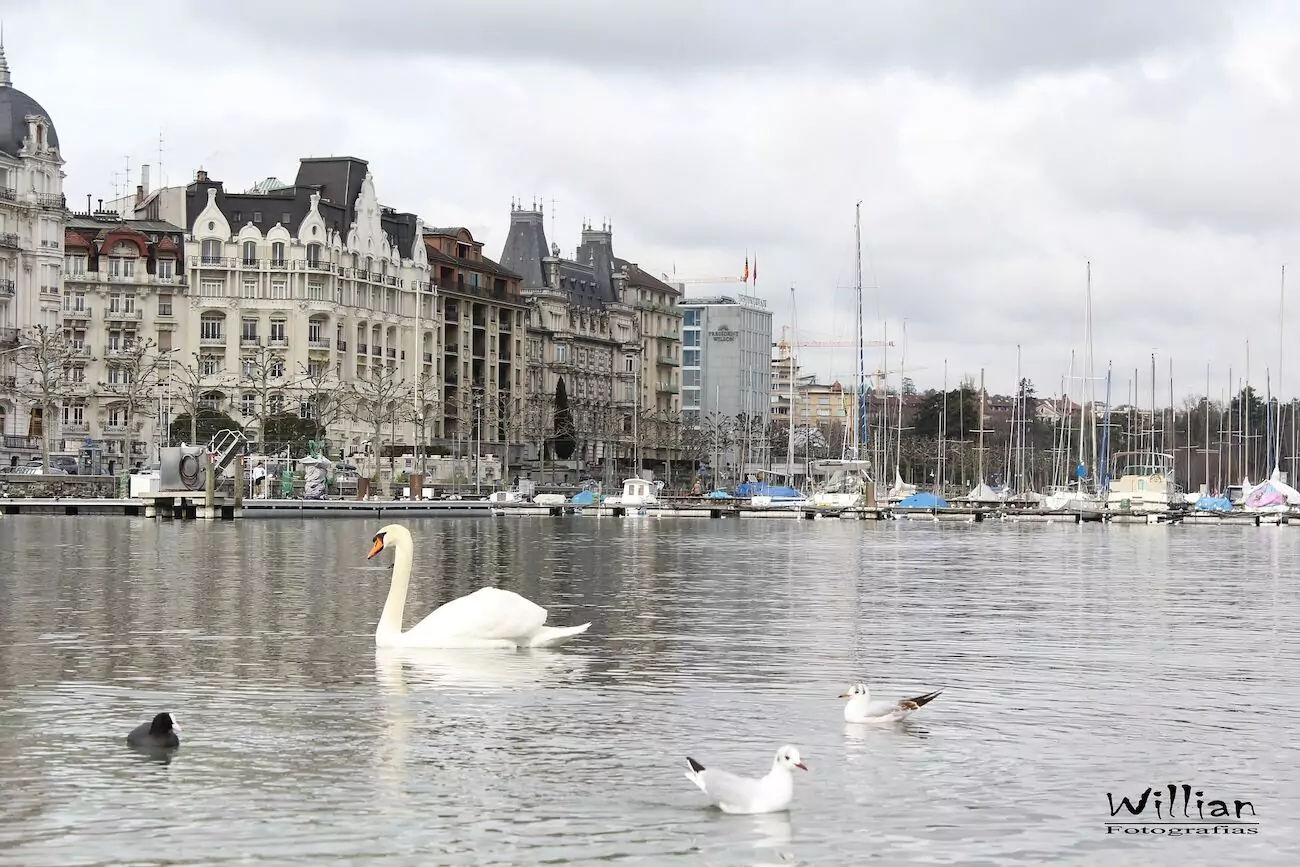
Unless you travel to Switzerland by car from another neighbouring country, your port of entry is likely to be Geneva or Zurich. Should you arrive in the Peace Capital, maybe heading for ski holidays in Switzerland, you might be tempted to go straight to the mountains. However, it’s worth spending at least one day in Geneva. Even longer, if you have time, because Geneva is also a perfect base for fantastic day trips on the lake and nearby towns. And also to France and the spectacular Mont-Blanc.
Is Geneva worth visiting?
Geneva is unlike any other Swiss city. Well, first of all you must know that compared to many other European cities like London, Paris, Madrid, Barcelona, Rome, and Milan, cities in Switzerland are comparatively much smaller. Zurich, the largest and my favourite, has a population of under 500,000, less than Edinburgh, Valencia, and Naples, to mention only a few. Even Bern, the Swiss capital, has little more than 120,000 inhabitants.
But let’s get back to Geneva, the second-largest city behind Zurich. This city has a unique international vibe because countless NGOs and luxury brands are headquartered in Geneva. While strolling around, you’ll meet people from all over the world, feel the cosmopolitan atmosphere, and breathe the air of opulence that shrouds one of the wealthiest cities in Europe.
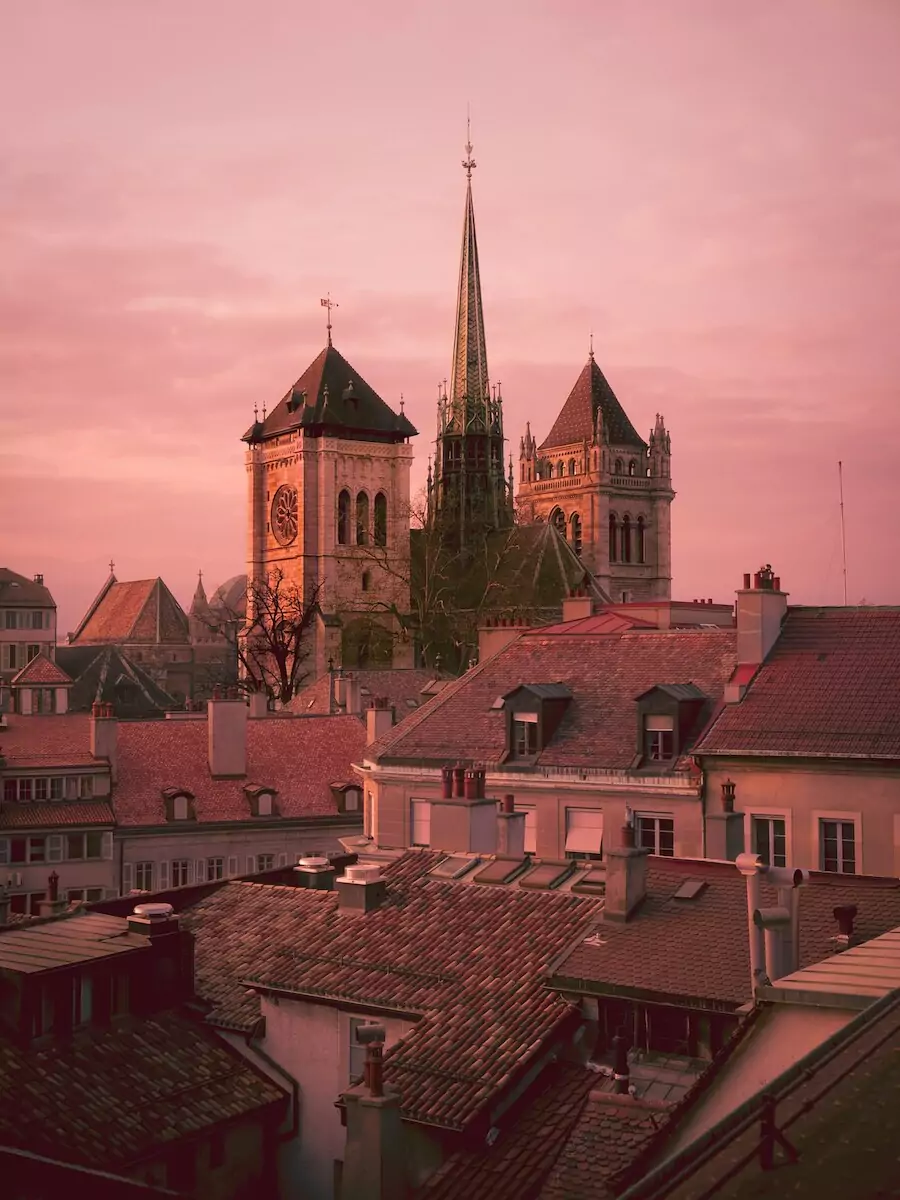
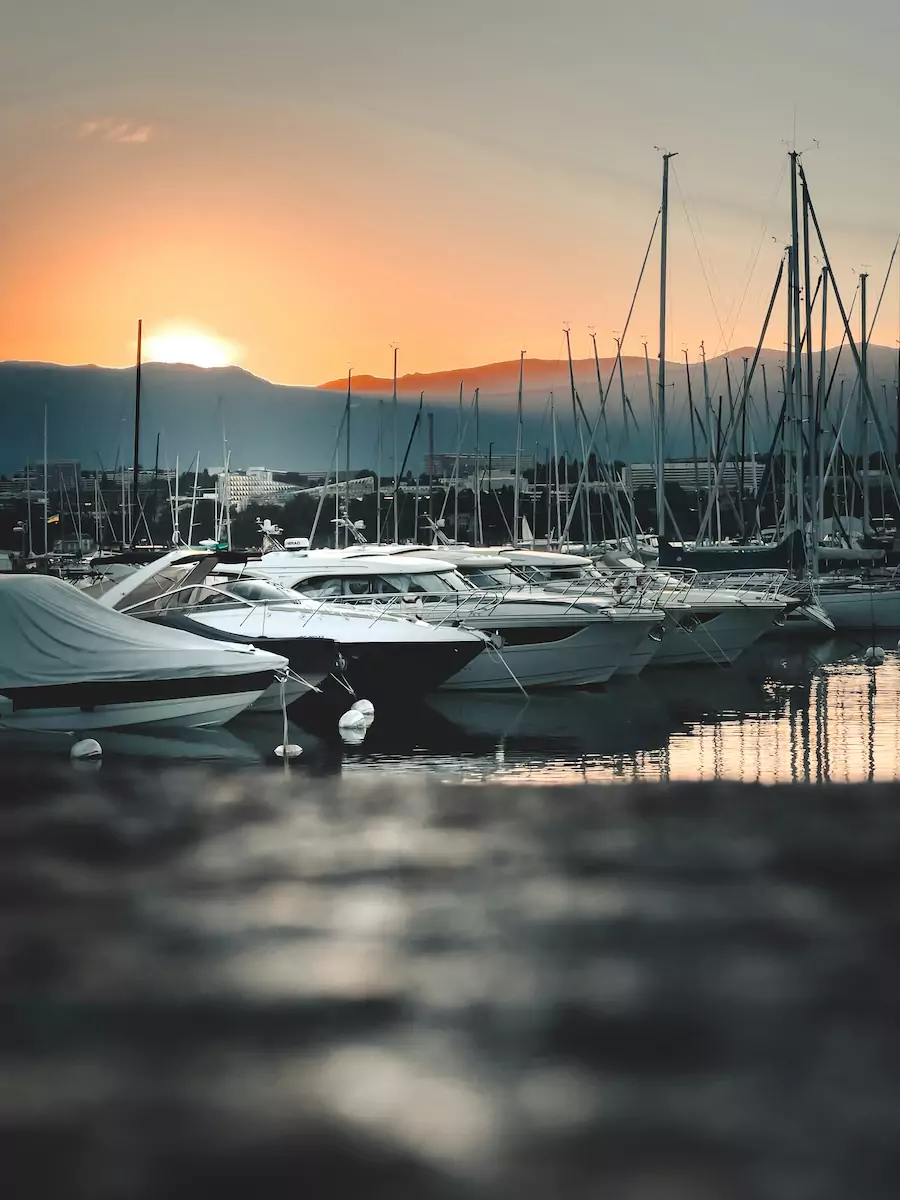
Geneva Old Town is charming and steeped in history. The lakeshore invites a stroll and a boat tour of the picturesque lake, weather permitting. Furthermore, the city is dotted with historical landmarks, museums, and galleries that reflect its rich cultural heritage.
Although the city is small, there are many attractions; therefore, 24 hours in Geneva will pass in a heartbeat! Furthermore, thanks to its geographical location, Geneva is ideal for unforgettable excursions to explore more of Switzerland and France’s natural beauty, including the iconic Lake Geneva and the breathtaking Alps in both countries. Last but not least, if you’re planning to go skiing in Switzerland and Geneva is your port of entry, don’t miss spending a day in the city!
Best Time to Visit Geneva
Geneva is a year-round destination. However, the best time to visit depends on what you’re looking for. Spring (April to June) and autumn (September to November) offer mild weather and possibly fewer tourists. Summer (July and August) is perfect for outdoor activities by the lake and enjoying the lovely lakeshore bars and restaurants. Winter (December to February) offers a magical view of snow-capped mountains and, in December, festive markets. Beware, though, that Geneva can get very cold, foggy, and windy in winter.
How Many Days in Geneva?
One day in Geneva is enough to see, if not all, at least most of the city’s main attractions. Of course, if you have time to stay 2 days in Geneva, or even 3, there’s plenty to do and see in the surroundings.
You can take plenty of day trips from Geneva on your own or with an organized tour. Options span from the majestic Mont-Blanc to picture-perfect Annecy. If you love chocolate (is there someone who doesn’t?), there’s a fantastic excursion allowing you to discover the countryside, the secrets of Swiss chocolate and gruyères cheese, and the delightful town of Gruyères.
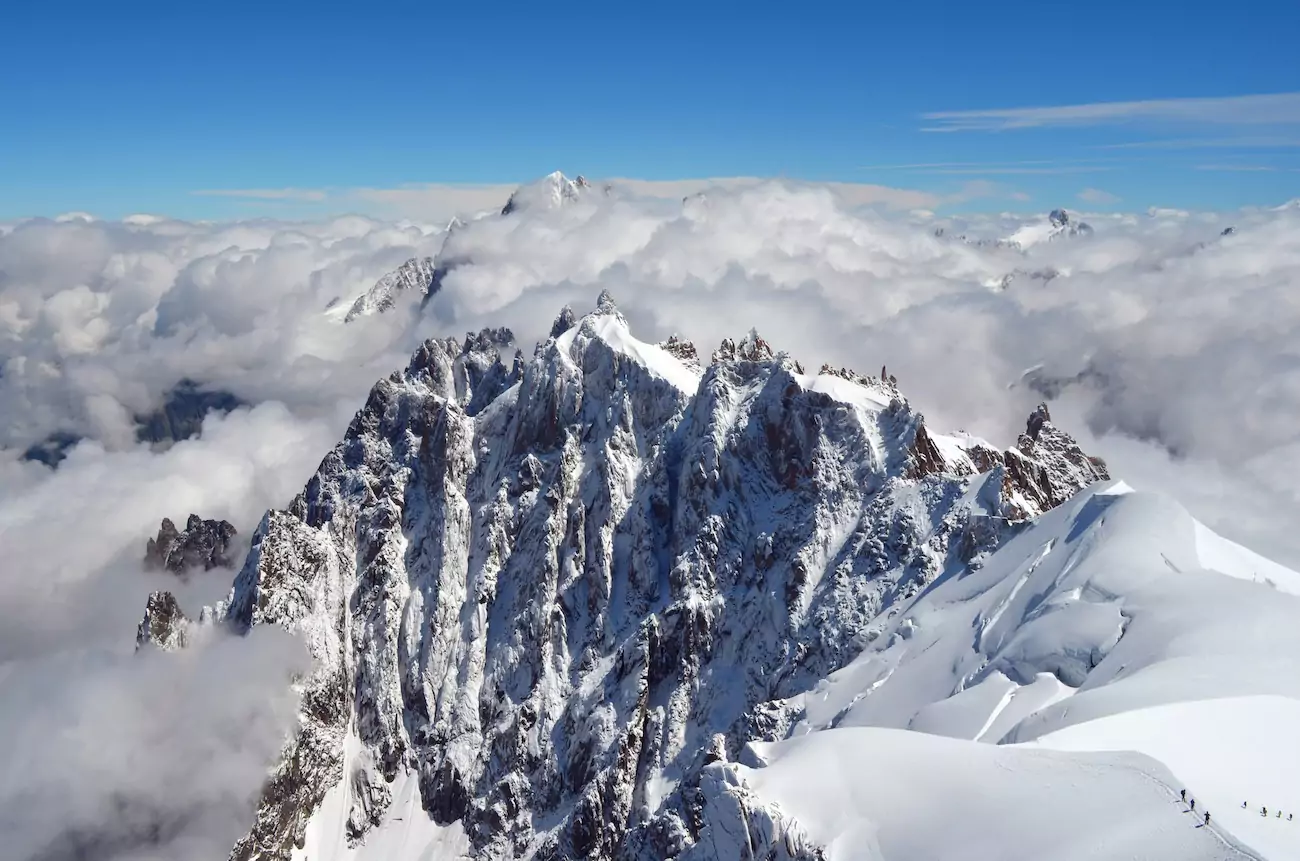
Last-Minute Trip to Geneva? Know Before You Go

Currency: Swiss Franc. Since Geneva is at the border with France, many places accept Euros. However, I suggest you change at least a small sum, especially if you’re heading to the countryside or traveling farther in Switzerland. Credit cards are widely accepted, except sometimes in mountain huts.
Getting there: You can fly to Geneva from many European airports and a few overseas destinations. If you haven’t booked your trip already, check the best options on Expedia.
Airports: Geneva Airport is only 4 km from the city, easily accessible by train and bus. The journey takes 7 minutes by train and about 20 minutes by bus. Check timetables and buy your train/bus tickets.
Getting around in Geneva: Geneva boasts an extensive network of buses, trams, and small yellow taxi boats. A single ticket, valid for 60 minutes, costs 3 CHF. Therefore, if you plan to use public transport more extensively, I suggest you buy a 1-day ticket, which costs 8 CHF if you start traveling at 9 a.m. (10 CHF if you’re an early bird).
Where to stay in Geneva: Geneva, like all of Switzerland, is expensive. Thus, the earlier you book your accommodation, the better your chances of finding an affordable solution.
- Rhodania Boutique Hôtel offers excellent value for money. Its rooms are simply but tastefully decorated, and the hotel is near Geneva’s main attractions.
- Featuring beautiful contemporary stylish decor, Eastwest Hôtel is close to the train station and Geneva’s prominent landmarks.
- Hôtel Les Armures is the perfect choice for a unique or romantic stay. It is beautifully decorated and located in Geneva Old Town.
Best Geneva guided tours: since one day in Geneva is a short time to explore the best of the city, you may want to take a guided tour. Here are a few of the best ones:
- The Private tour in electric tuktuk is a tailor-made 1-hour ride to discover Geneva’s most beautiful spots.
- Visit the best of Geneva with the city highlights private walking tour.
- If you’re looking for unusual things to do in Geneva, have a look at the chocolate flavors tour for a mouth-watering experience.
Geneva History in a Nutshell

Conquered by the Romans in 121 B.C., Genava – as it was called at the time – served as an important trading outpost due to its strategic location at the confluence of the Rhône River and Lake Geneva. Later, the city became Christian, and during the Middle Ages, it was part of the Holy Roman Empire.
One of the most defining periods in Geneva’s history was the Protestant Reformation. By the early 16th century, Geneva had become a refuge for Protestant reformers, most notably John Calvin, who arrived in the city in 1536. Under Calvin’s leadership, Geneva became a center of Protestant thought and theology, earning it the moniker “Protestant Rome.”
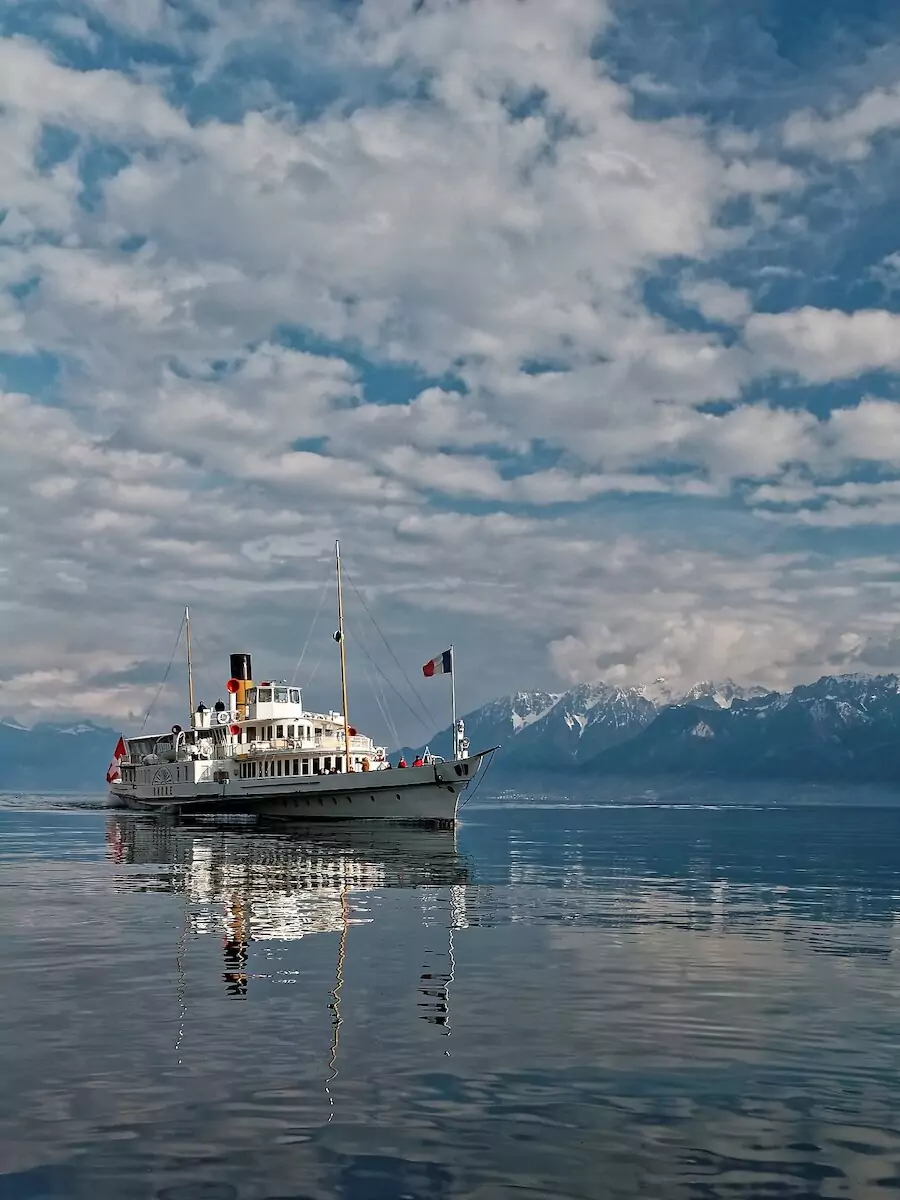
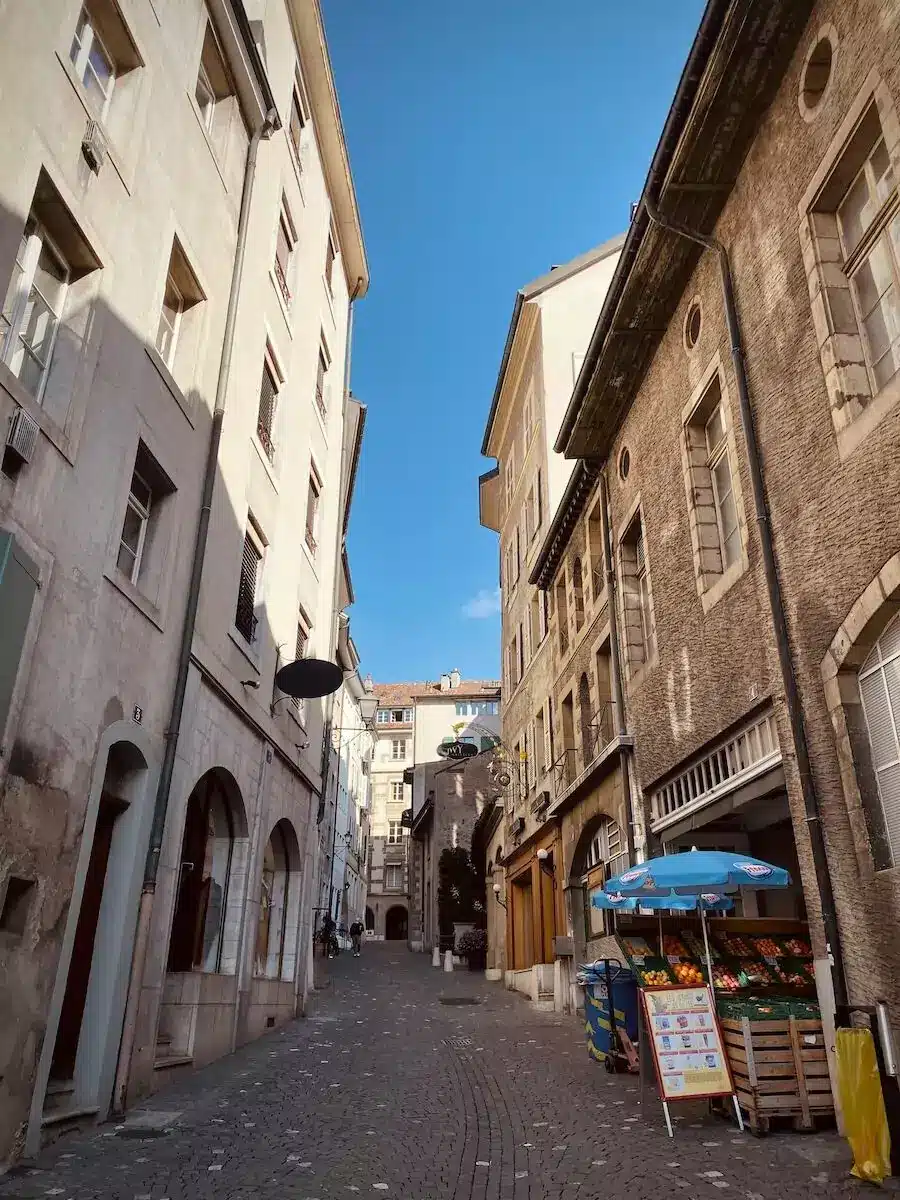
Calvin’s influence permeated every aspect of life in Geneva, from religious practices to education and governance. The establishment of the Geneva Academy in 1559 attracted students from across Europe, further cementing the city’s status as a beacon of reform and intellectual thought. The Reformation shaped Geneva’s religious identity and its political and social structures, leading to a republic governed by strict moral codes and a strong sense of civic duty.
In the 19th century, Geneva became a hub for international diplomacy. It first housed the headquarters of the International Committee of the Red Cross (ICRC) in 1863. Founded by Henri Dunant, a native of Geneva, the ICRC was established to provide humanitarian assistance during armed conflicts, a mission that continues today. The city’s commitment to peace and diplomacy was further solidified after World War I when it became the seat of the League of Nations in 1920. Although the League ultimately failed to prevent another global conflict, Geneva’s reputation as a city of diplomacy endured.
Today, Geneva hosts a myriad of international Non-Governative Organizations, including the United Nations Office at Geneva (UNOG), the World Health Organization (WHO), and the World Trade Organization (WTO). This concentration of global institutions has earned Geneva the “Capital of Peace” title, reflecting its ongoing dedication to fostering international cooperation and dialogue.
1 Day in Geneva: How to Experience the Best of This Charming City

Although the city is relatively small, there are many activities to do in Geneva. Thus, 1 day in Geneva will be over quicker than expected. Of course, as in every destination, it’ll be up to you to decide which of Geneva’s attractions to focus on. But let me help you highlight some of the best things to do in Geneva. Then, you’ll choose which ones to include in your Geneva 1-day itinerary.
Best Things to Do in Geneva, Switzerland: Map
Discover Geneva Old Town
Nestled on a natural hill, Geneva’s Old Town is a hidden gem. So, if you can only spend a day in Geneva, the historical center is a must-see.
At the heart of the Vieille Ville lies Place Bourg-de-Four, a vibrant square adorned with a fountain, fresco-adorned cafes, and elegant 18th-century facades. Surrounding it is a labyrinth of narrow streets and charming squares, inviting you to wander through cozy restaurants and delightful antique shops. On Rue du Puits-Saint-Pierre, be sure to visit Maison Tavel. Built in the Middle Ages, it’s Geneva’s oldest house, now home to the Museum of the History of Geneva.
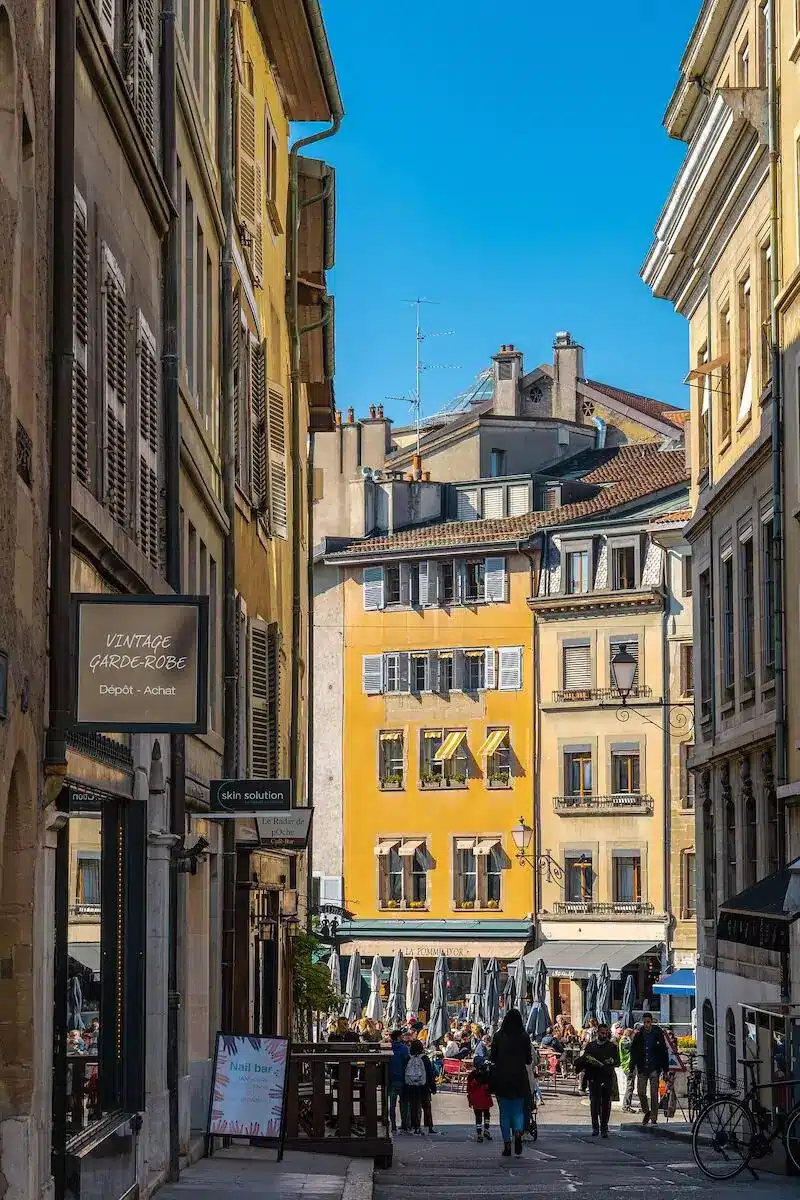
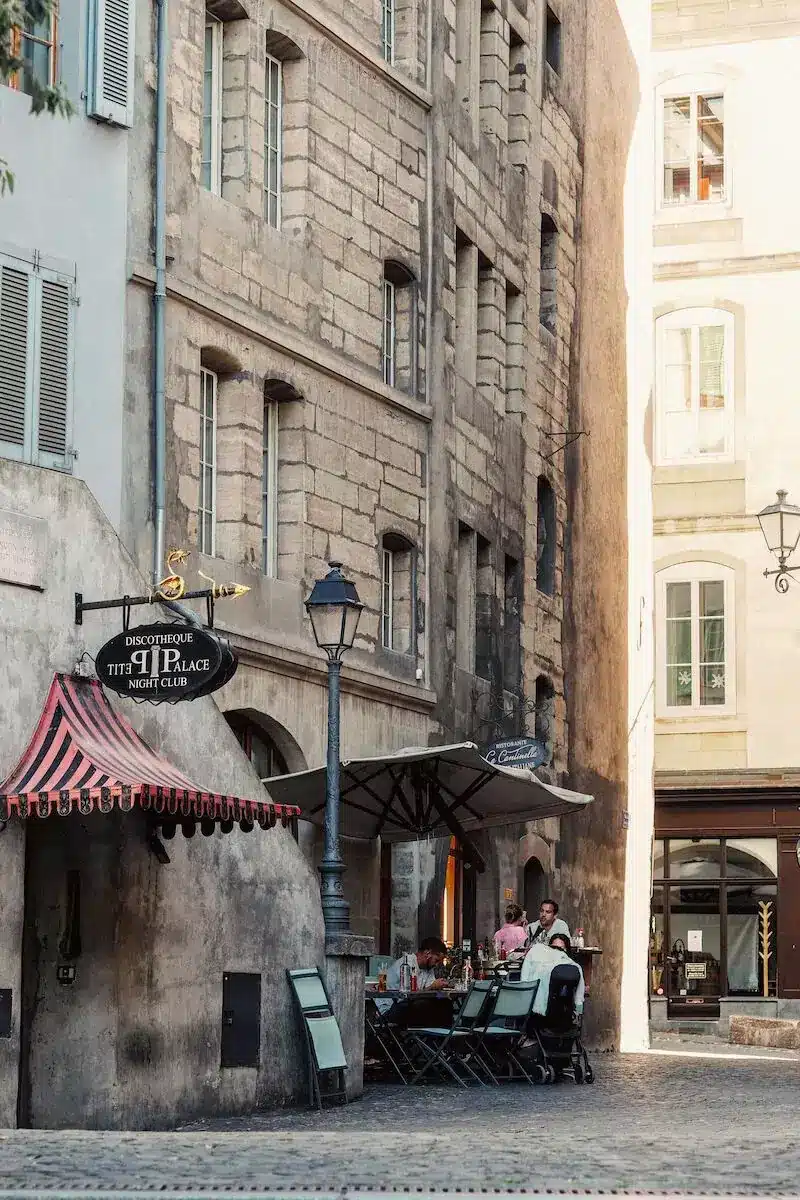
St. Peter’s Cathedral
Located at the highest point in the old city, St. Peter’s Cathedral majestically overlooks Geneva. This imposing structure, both austere and grand, has undergone multiple renovations. As a result, the current building is a blend of Gothic and Neoclassical architectural styles. The cathedral played a crucial role in Geneva’s history. From here, in the 16th century, John Calvin advanced the Protestant Reformation.
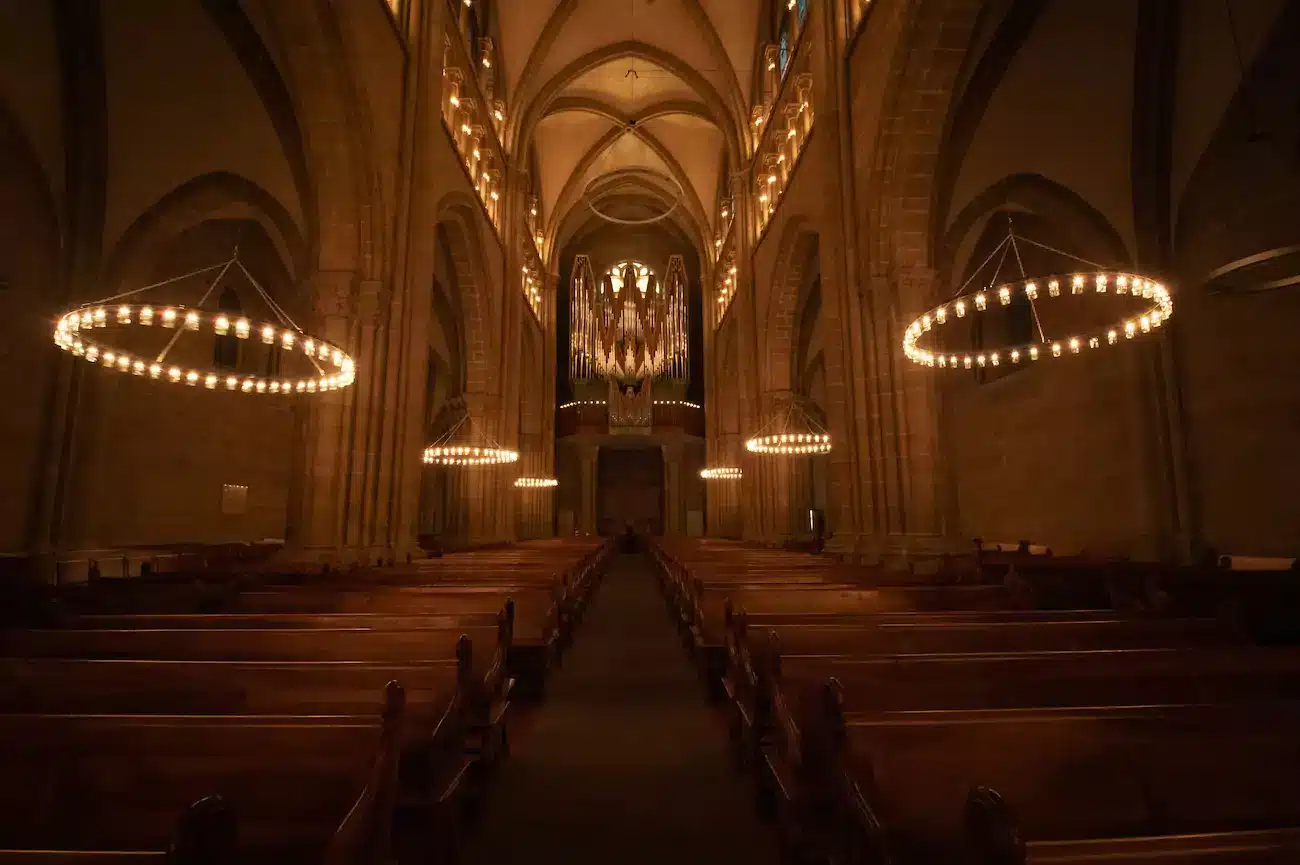
After exploring the interior, be sure to ascend the northern and southern towers for stunning views of Lake Geneva and the surrounding mountains.
Geneva Jet d’Eau
The Jet d’Eau is one of Geneva’s most iconic landmarks, visible from nearly every corner of the city. Shooting 140 meters into the air at 200 km per hour, it’s one of the tallest fountains in the world. If you’re watching from the pier, expect a refreshing spray.
However, the Jet d’Eau is more than just a stunning fountain. It was originally created in 1886 as a safety valve to relieve pressure from a nearby hydroelectric plant. By the late 19th century, the people of Geneva relocated the fountain to its current spot, appreciating its aesthetic significance.
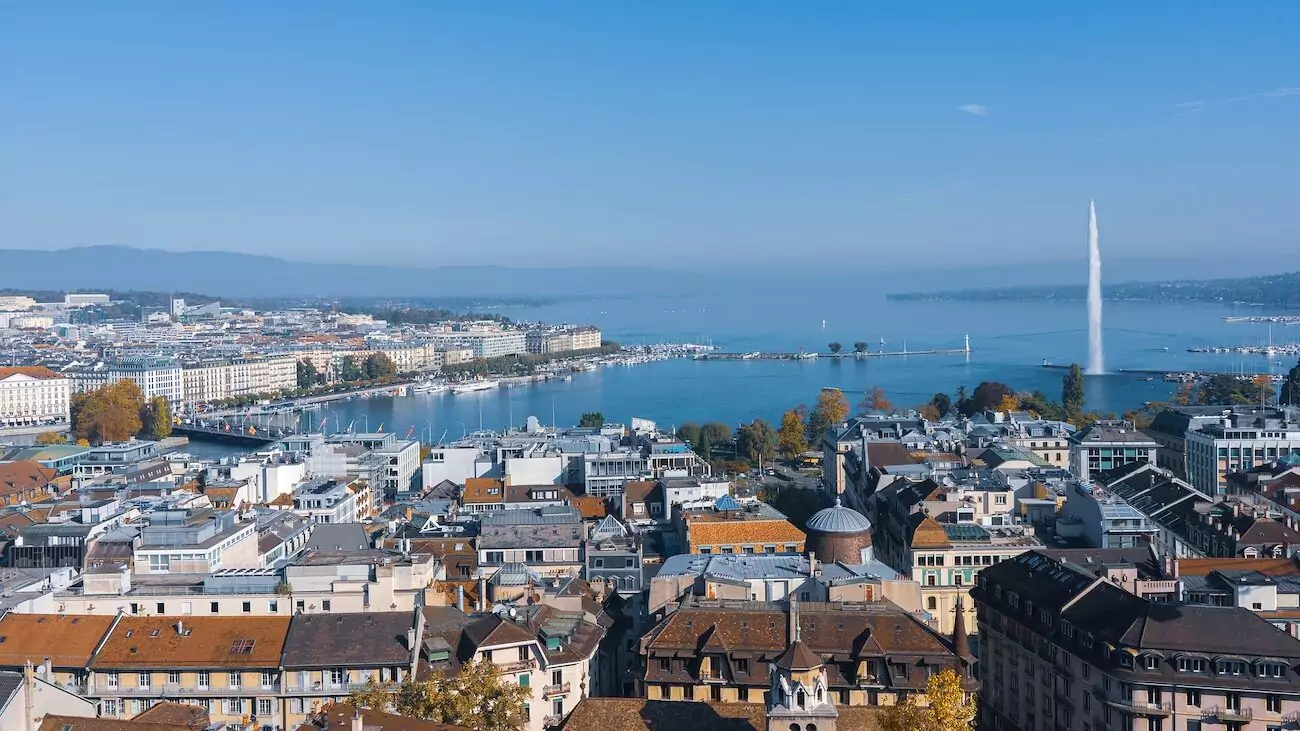
If you’re fortunate, you might catch the Jet d’Eau illuminated in vibrant colors at night, an event that happens a few times a year to celebrate special humanitarian occasions.
Parc des Bastions and the Reformation Wall
At the foot of the Old City and close to the University, Parc des Bastions is a popular spot for relaxing, enjoying a picnic, or engaging in one of the six giant chess games.
One of Geneva’s main attractions is the Reformation Wall, which is located within the park. This significant landmark was created in 1909 to commemorate the 400th anniversary of John Calvin’s birth. Stretching 100 meters long, the wall features towering statues of four key figures in the Calvinist Reformation: William Farel, John Calvin, Theodore Beza, and John Knox. Behind these statues, the Protestant Reformation and Geneva motto is inscribed: Post Tenebras Lux (After Darkness, Light).

The Geneva City Pass is a great option if you plan to visit many landmarks and museums. The 24 hours pass costs 35 CHF, including public transportation. The City Pass is even more convenient if you spend 2 days in Geneva: 50 CHF, public tranport included. The Geneva City Pass includes 60 discounted or free activities. Free things to do in Geneva with the Pass include, among others, the Patek Philippe and International Red Cross Museums, the Mont-Salève cable car, access to the Towers of St. Pauls Cathedral, and free entry at Geneva beach.
Geneva Lakeshore
Switzerland is famous for its mountains, but the country also boasts many beautiful lakes and Lake Geneva is one of them. Take a leisurely walk along the Quai du Mont Blanc, a picturesque promenade that stretches along the lakeshore, leading you to the Bains des Pâquis. The artificial jetty at Bains des Pâquis is a popular gathering place for locals, especially during the summer, when people sunbathe and enjoy a refreshing swim. You can join them or sit at the Buvette, a cozy lakeside café, where you can savor a drink and a bite to eat while soaking in the stunning views of the lake and the surrounding mountains.
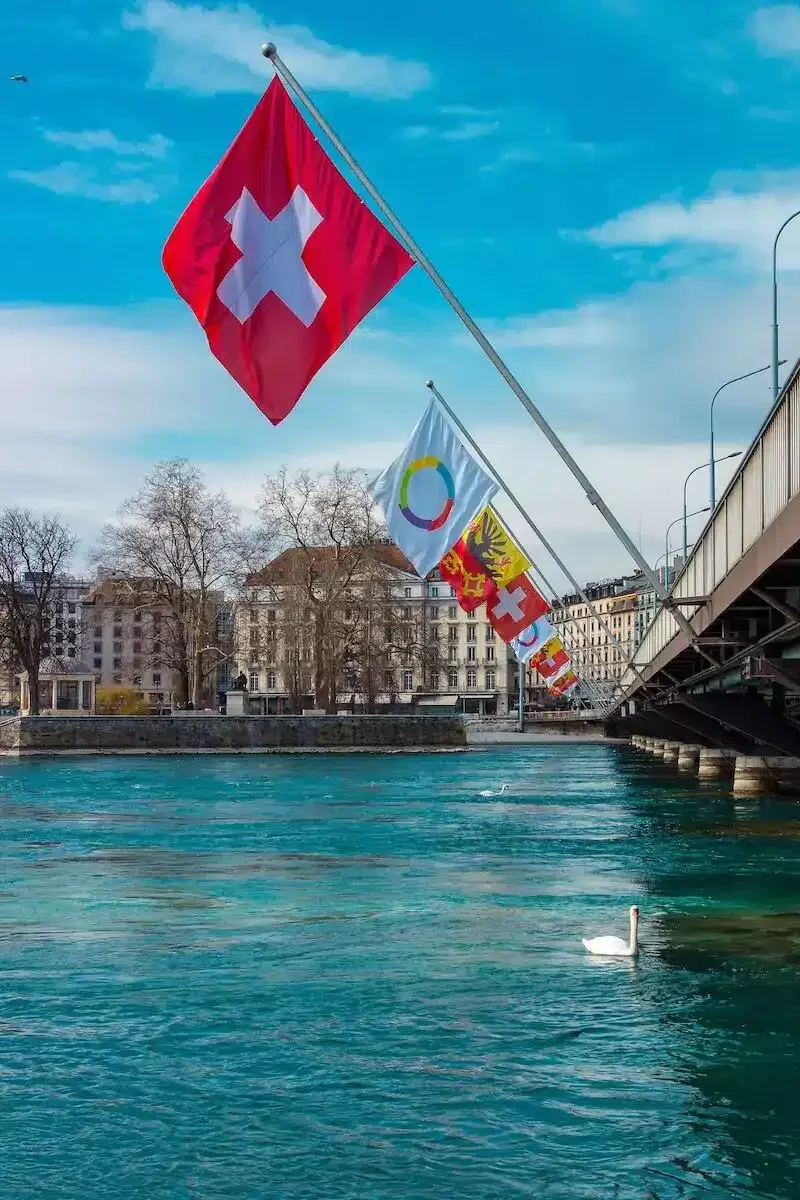
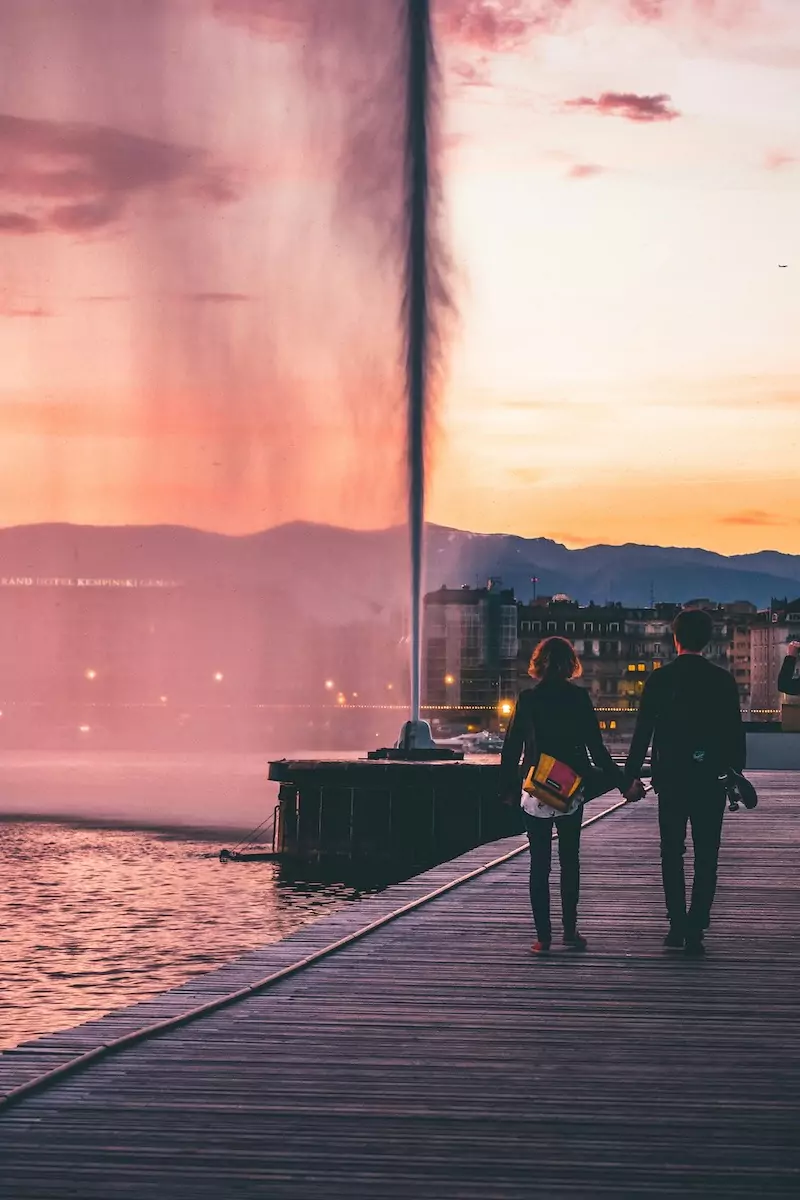
If the weather turns rainy, don’t worry—Bains des Pâquis has you covered. Head to the saunas or hammam, or indulge in a traditional Turkish bath. These facilities provide a perfect way to relax and rejuvenate, no matter the weather.
Patek Philippe Museum
Clocks are an iconic symbol of Switzerland, with the fame of Swiss watches tracing its roots back to Geneva. In the late 1500s, when John Calvin preached the Protestant Reformation, he dramatically altered the city’s cultural landscape. Calvin stripped the Cathedral of its ornate decorations and prohibited the display of jewelry. As a result, goldsmiths turned their skills towards crafting more modest and functional items, such as pocket watches, which eventually evolved into the renowned wristwatches we know today.
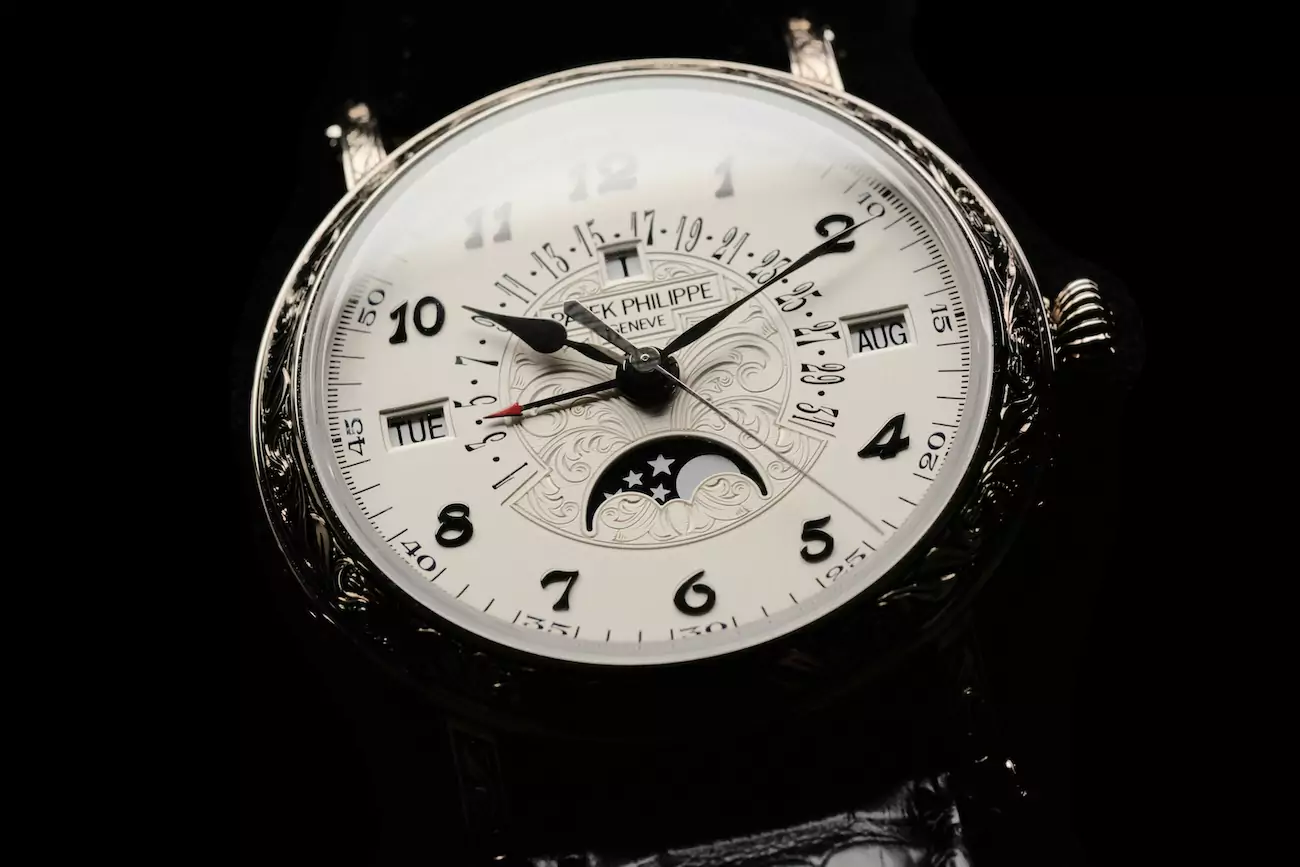
For those interested in the intricate artistry of timepieces, there’s no better place to visit than the Patek Philippe Museum in Geneva. This museum is a treasure trove for watch enthusiasts, featuring two main exhibitions. The Antiques Collection spans 500 years of watchmaking history, showcasing pieces from the 1500s to the 1900s. Meanwhile, the Patek Philippe Collection highlights the exquisite timepieces produced by the company since its founding in 1839. The Patek Philippe Museum stands out as one of the best activities in Geneva when it rains. There, you’ll enjoy a fascinating journey through the evolution of watchmaking.
Geneva Red Cross Museum
Geneva is a city like no other. It’s home to some of the world’s most significant NGOs and international organizations, and for good reason. The Geneva Convention was born here. The treaty, signed in 1864, resulted from the vision and dedication of Swiss businessman Henry Dunant. The Geneva Convention was groundbreaking in its aim to protect the rights of the wounded during war, ensuring they received care without discrimination based on race, origin, religion, or political beliefs. This landmark treaty followed the creation of the International Committee of the Red Cross one year earlier, in 1863.
The International Red Cross and Red Crescent Museum in Geneva offers visitors a deep dive into the history and impact of this organization. The museum’s permanent exhibition, “The Humanitarian Adventure,” takes visitors on a journey through the challenges of humanitarian efforts worldwide.
Lake Geneva
I love experiencing cities from different perspectives. That’s why whenever I visit a town by a lake, sea, or river, I make it a point to take a boat tour. The breathtaking views from the water are simply unmatched. I enjoyed boat tours in Porto, Zurich, and Lucerne, to mention only a few European cities. And I took the boat and navigated Lake Geneva many times.
You can enjoy a peaceful 50-minute boat ride around the lake. Alternatively, the grand cruise on Lake Geneva lasts two hours and allows you to see more of the lake and its beautiful mountain scenery. For a magical experience, you can also opt for an evening boat tour, when the city lights reflect off the water and create a mesmerizing atmosphere.
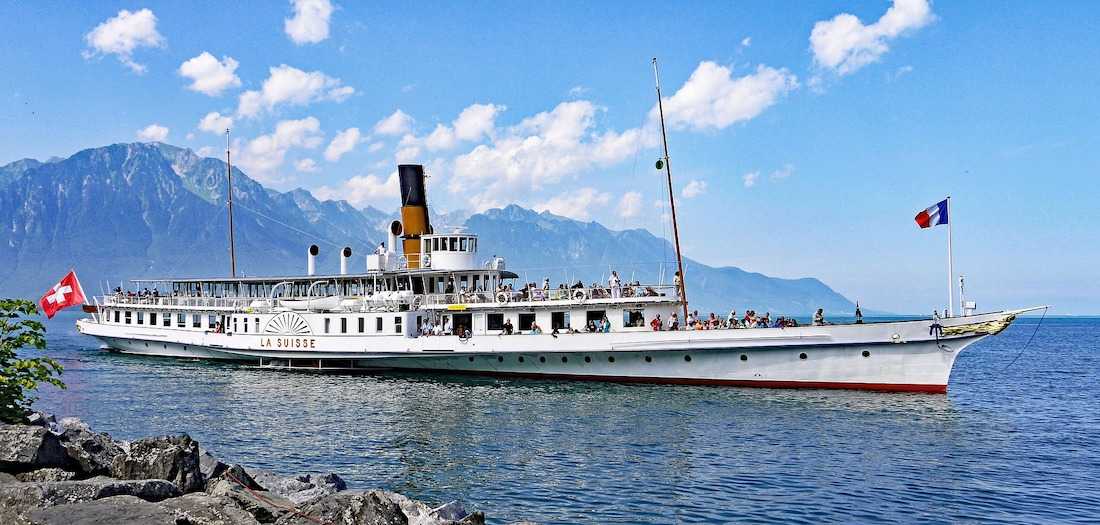
Jardin Anglais and the Flower Clock
The Jardin Anglais (“English Garden”) is a beautiful spot with plenty of shaded areas, making it a favorite among tourists and locals. As you explore the lovely gardens, you’ll come across the famous Flowered Clock (“Horloge Fleurie”). On par with the iconic Jet d’Eau, it’s one of the city’s symbols and one of the most photographed spots in Geneva.
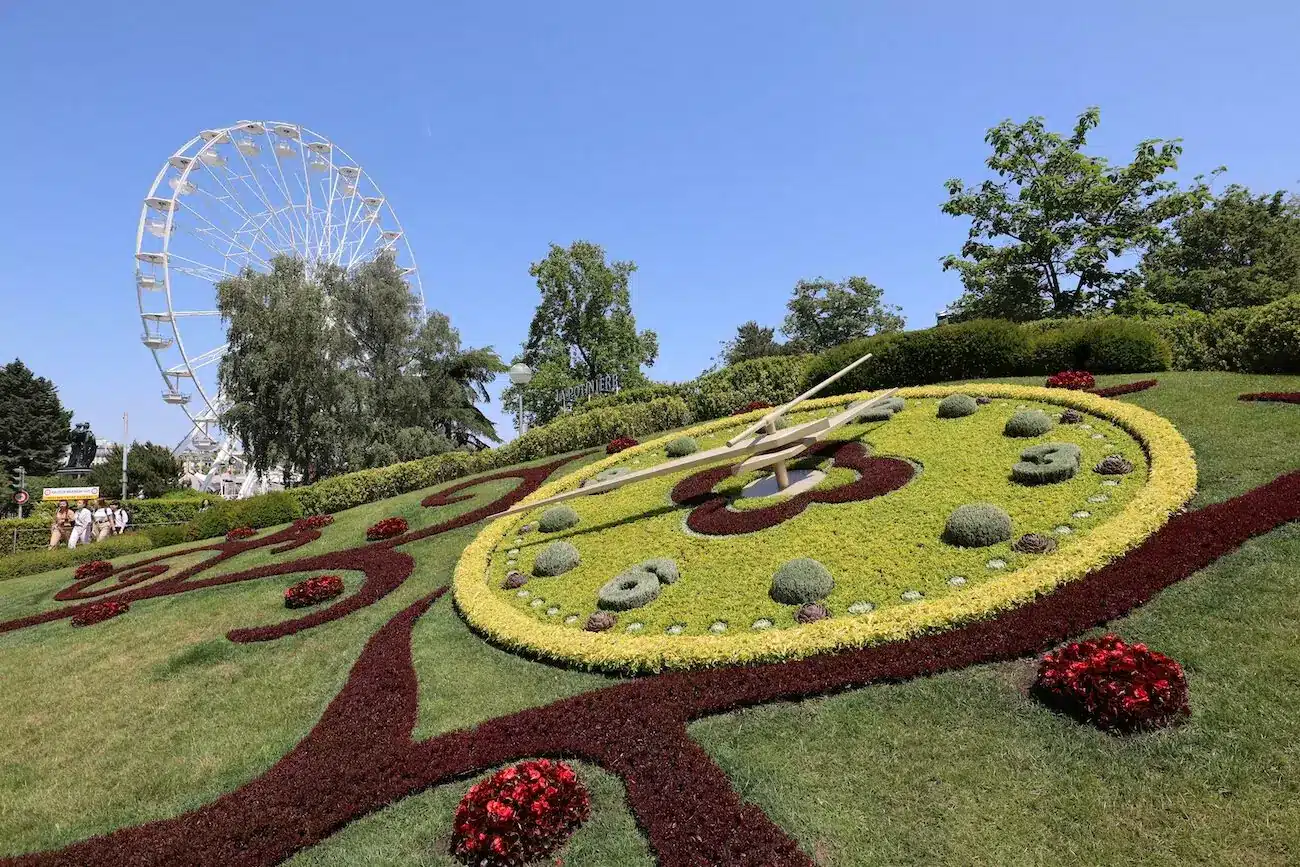
This stunning Flowered Clock is made from 6,500 vibrant flowers, which are changed several times throughout the season to reflect the evolving colors of the year. Be prepared to join a crowd of tourists snapping selfies at this iconic Swiss landmark, a testament to Geneva’s unique blend of nature and artistry.
Wrapping things up… A day in Geneva may seem short, but with careful planning, you can experience the essence of this beautiful city. From its historical landmarks and cultural heritage to its stunning natural beauty and vibrant neighborhoods, Geneva promises a memorable visit.
Don’t forget…
Remember to pack a travel adapter to recharge all your electronic devices.
Also, although travel insurance is not required for people visiting Europe, I strongly recommend buying appropriate coverage. It’s good to have peace of mind and support in case of travel disruptions or health issues. I never traveled abroad without it, and I needed it more than once.

Pin for later!

